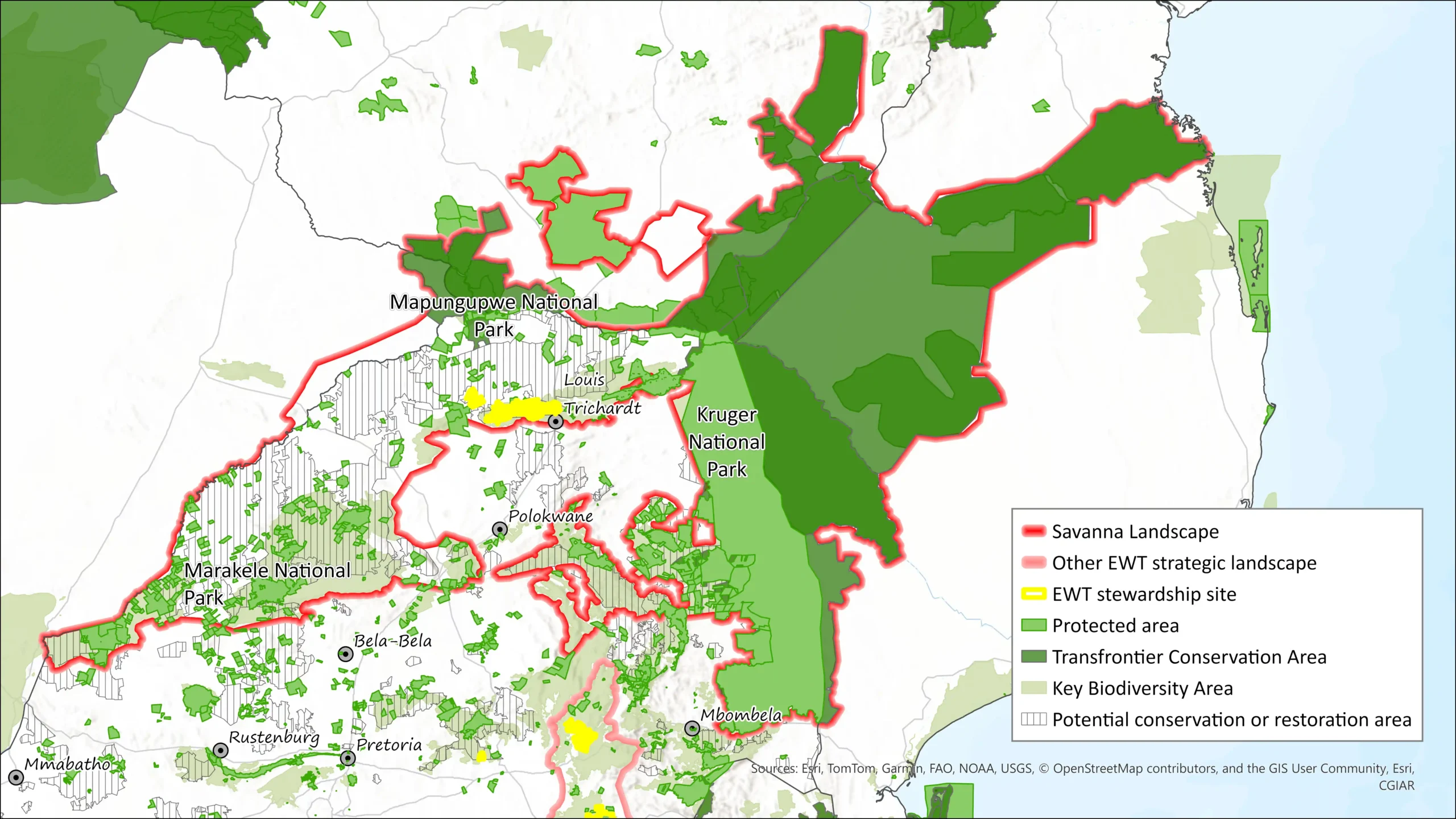Savanna

The Savanna Strategic Conservation Landscape spans parts of South Africa, Mozambique, Zimbabwe, and Botswana. It includes expansive grasslands, floodplains, wetlands, and vital river systems such as the Limpopo and Olifants. With protected areas like the Greater Limpopo and Greater Mapungubwe Transfrontier Parks at its core, this region supports a wide range of species, from African Wild Dogs and Cheetahs to reptiles, cycads, birds of prey, and butterflies. These ecosystems are essential not only for wildlife, but also for the people who depend on them for water, grazing, and climate stability.
The EWT’s work here focuses on protecting species and habitats while supporting the communities that live alongside them. We collaborate with landowners, farmers, and local partners to promote sustainable farming, reduce conflict between people and wildlife, and reconnect fragmented habitats through conservation corridors. Combating poaching and illegal wildlife trade remains a key priority, as does strengthening protected area management.
To sustain this work, we are developing finance models that can fund long-term restoration, aligning biodiversity goals with local enterprise and land use. We’re also working to ensure that environmental laws are applied effectively to protect species and ecosystems under pressure. Scientific tools like Bioblitzes help us identify species of concern and guide targeted action.
Together with communities and conservation partners, we are building a Savanna landscape that is better connected, more resilient, and equipped to support both people and wildlife in the face of change.
Why it’s important
The Savanna Landscape is vital to the EWT’s strategy, boasting unique biodiversity, including African Wild Dogs, Cheetahs, and antelope species. Its open grasslands provide critical ecosystem services such as water regulation, groundwater replenishment, and soil erosion prevention. These services support agriculture, livelihoods, and ecological balance. However, the Savanna faces threats from poaching, unsustainable land use, and climate change. Immediate conservation efforts are necessary to protect biodiversity and sustain the resources critical to local communities and regional resilience.

So What?
Neglecting the Savanna risks the collapse of ecosystems that support communities, agriculture, and biodiversity. Without action, resources essential for survival, like water and fertile soil, will diminish, leaving communities vulnerable to climate extremes. Protecting this landscape is crucial not just for wildlife but for people, ensuring resilience to resource scarcity and unpredictable climates. Inaction threatens livelihoods, ecosystems, and the balance on which both people and nature depend.
Vision
A thriving, connected Savanna where sustainable conservation partnerships foster resilient landscapes, benefiting wildlife, ecosystems, and local communities for generations to come.
Size
176,547 KM²
Target Species
Birds of Prey
Reptiles
Cycads
Amphibians
Butterflies
Carnivores
Why we do it
Community Well-being: Supporting sustainable livelihoods and preserving cultural heritage.
Strategic Water Source Areas: Safeguarding water resources for wildlife and communities.
Wildlife & Agriculture: Balancing conservation and sustainable farming.
Conservation Corridors: Connecting habitats for species and ecosystem health.
Climate Resilience: Adapting to protect ecosystems and communities.
Illegal Trade & Poaching: Strengthening enforcement to safeguard endangered species.
Eco-Tourism: Generating income and incentives for conservation.
Protected Area & Population Management: Ensuring healthy species populations.
Habitat and species conservation: Protecting threatened habitats and wildlife.
Cross cutting services
People in Conservation Unit: co-developing and implementing conservation management approaches to ensure sustainable conservation impact and benefit sharing.
Wildlife and Infrastructure Unit: Reducing infrastructure impacts on species and habitats.
Biodiversity and Business Unit: Supporting the integration of biodiversity into corporate strategy and operations, to achieve measurable positive biodiversity outcomes.
Land, Air, Water and Species (LAWS): Provides dedicated environmental legal expertise to advance the strategic objectives of the EWT.
Sustainable Finance Unit: Focus on mobilizing financial resources to support conservation efforts.
Wildlife in Trade Unit: Disrupting and preventing illegal wildlife trade, especially succulent plants and reptiles in the drylands.
Conservation Tools and Technology Unit: Discovering new species and understanding species distributions to inform conservation priorities in the drylands.
